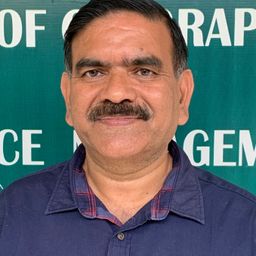Sustainable Agricultural Development for Poverty Reduction in the Uttarakhand Himalaya
Mon statut pour la session
Subsistence agriculture, a centuries-old practice, is the main occupation and the major source of livelihood for people of the Uttarakhand Himalaya. Here, agriculture is rain-fed, practiced on the fragmented and narrow patches of the terraced field with a low output. The crop production is fully dependent on the monsoon rain. In the past, it was considered as subsistence to feed the farming community; however, with the high population growth, the people are facing food insecurity and malnutrition, and have been living below the poverty line. The high climate variability and change during the recent past have affected crops’ production and yield, largely in the rain-fed areas. Although, the government data shows that the Uttarakhand Himalaya is in a better position, in terms of poverty, as compared to the nation yet, the disparity within the districts of Uttarakhand is enormous. In the mountainous mainland, more than 40% of the rural people are living below the poverty line and facing malnutrition. This paper examines the role of sustainable agriculture in poverty reduction in the Uttarakhand Himalaya. Data on agriculture and poverty were gathered from primary and secondary sources. A case study of eight villages of the Garhwal Himalaya was conducted in 2021 on agriculture and poverty status. Poverty reduction is one of the important sustainable development goals of the United Nations. In Uttarakhand, sustainable agriculture is the best tool for poverty eradication and food security. The Uttarakhand Himalaya has rich agro-biodiversity, which can be harnessed for poverty reduction. The agro-ecological zones can be redefined. As the crop races/cultivars have shifted to higher elevation due to warming of the river valleys and middle altitudes, the suitability analysis of crops along the altitudinal gradient can manifest the way to poverty elevation. This study reveals that in the valley regions, where irrigation facilities are adequate, paddy can be grown. In the middle altitudes – wheat, barley, and mustard can be grown as these crops are rain-fed, along with the fruits and vegetables – citrus, plum, apricot, and peach, onion, and tomato. The highlands are suitable for growing millets (twelve grains including pulses and oilseeds), apple, pear, walnut, potato, and other suitable fruits and vegetable crops. The use of technology, such as value addition, to make the products more valuable, food and fruit processing centers, and cold storage at the village level will assist marginal farmers to get increased benefits for their products. Adequate market facilities are inevitable to sell the products timely and effectively. Education, institutional supports, and the establishment of small-scale village-based agriculture industries are suitable measures for poverty eradication from the mountainous mainland. The role of the agricultural department in providing technical and financial supports to the marginal farmers is noteworthy.
